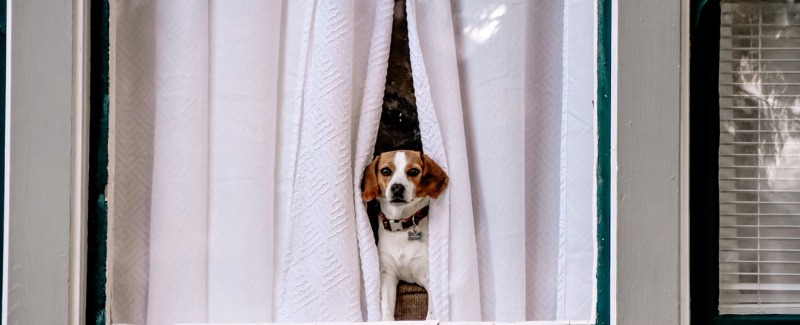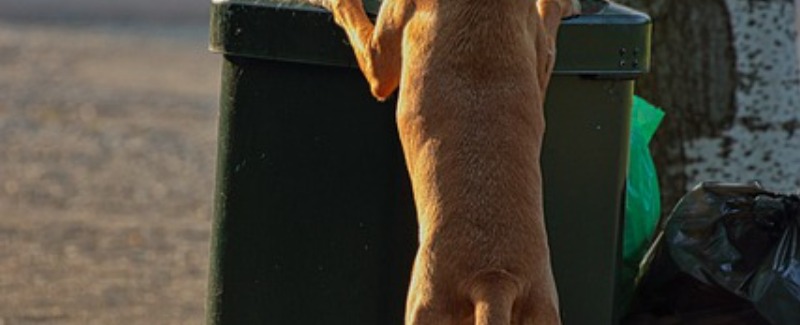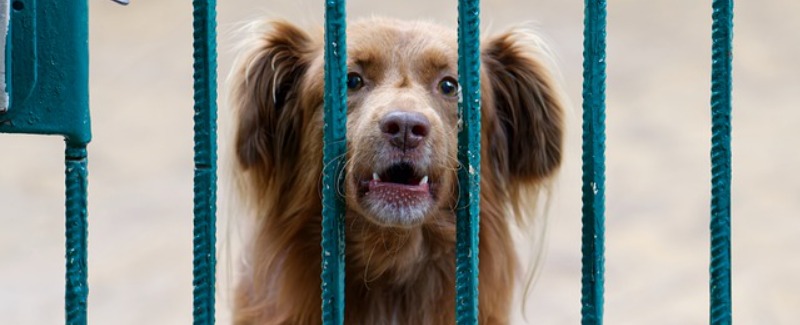True separation anxiety is fortunately relatively rare, but when it is diagnosed, it can be extremely difficult, and in some cases, impossible, to treat successfully. Separation anxiety often has a genetic component, but can also be caused or encouraged by poor handling, usually by babying the dog and having constant contact with him.
Preventing Separation Anxiety
Preventing separation anxiety is easy if you can discipline yourself. From the moment you bring your dog home, insist that you spend some time apart, whether you’re home with her or not. If you’re home, she should be in her crate or behind a baby gate for several short periods throughout the day. Only let her out if she’s calm and quiet. When you’re hanging out with her, don’t let her have constant physical contact with you. Make her settle in her bed sometimes, and pet her when she’s earned it, but dole it out in small doses. Don’t let her get literally addicted to your hands on her every moment of every day.
When you leave, don’t make a fuss, kissing and apologizing to her for five minutes before you go. Put her in her crate, give her a treat or stuffed Kong, say “See ya later,” and be on your way with no emotion or emotional response to her protest. When you come home, completely ignore her until she’s calm. This is really hard for people, because it just plain feels good that somebody is that happy to see you. When she’s calm, let her out of her crate (make her wait until you release her, please), have her sit, and then pay attention to her for no more than 20 seconds, then go about your business.
Separation Anxiety or Bored and Under-exercised?
Just because a dog is destructive when no one is home doesn’t mean he has separation anxiety. Most destructive dogs just have too much energy and are bored, or seize the opportunity to scavenge or chew something they don’t normally get the chance to when the people are home. These dogs don’t have a psychological problem to solve; they just need better management.
True separation anxiety is a panic disorder, and it almost always involves barrier destruction (of door or window frames) and destruction of personal items like clothes and shoes (rather than household items like sofa cushions). Separation anxiety — afflicted dogs also often vocalize excessively and often eliminate, sometimes on the owner’s property or bed. These poor dogs suffer to the point that they will mutilate and injure themselves in their panic, sometimes to escape confinement.
One of the best ways to diagnose separation anxiety is to set up a video recorder. Most of the damage in separation anxiety usually occurs in the first hour after departure, and the dog will usually be visibly panicked or frantic, often shaking, pacing, and panting. Frustrated and bored dogs appear relaxed and to be having a good old time, shaking the sofa cushions, and parading around the house with the remnants of the trash.
Treating separation anxiety often involves the use of antianxiety medications in addition to behavior modification. Medications range from prescription drugs to herbal remedies, and it may take some experimentation to discover what is most helpful to your dog.
Many dog owners have reported success in treating separation anxiety and other panic or phobic disorders, like thunderstorm phobia, with natural remedies, including flower essence remedies and melatonin, without the negative side effects sometimes present with traditional medications.
The behavior-modification process includes desensitizing the dog to the triggers that precede departure (putting on your coat, getting your keys), getting physical distance from the dog when you’re home, limiting physical contact, increasing exercise and training, and giving the dog a coping mechanism.
For some dogs, it’s helpful to feed them all their meals from a stuffed Kong or other food-dispensing toy. This is started with the owner present, then in another room, and finally out of the house for gradually longer periods of time. In the meantime, it’s important not to allow the dog to rehearse the panicky behavior, so the services of a pet sitter or day care may be necessary.





